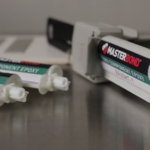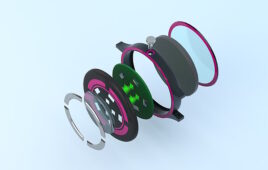Master Bond offers a range of adhesive systems that feature superior hydrochloric acid resistance. To ensure high quality, Master Bond continually tests its materials by exposing them to specific chemicals over a long period of time.

Click here to view the data and read the results on how effectively Master Bond’s compounds resisted hydrochloric acid.
A common way of testing the chemical compatibility of epoxy is immersing a sample in a chemical and measuring its change in weight over time. A significant loss or gain in weight would indicate a decreased ability of a material to stand up to chemical exposure.
These tests enable accurate recommendations of the ideal product based on specific application requirements.
In this experiment, Master Bond focused on testing its epoxies for their resistance to hydrochloric acid. The compounds used for testing are a variety of two-and one-component epoxies, as well as a one-component UV curing systems with good overall chemical resistance.
For the first round of testing, which involved exposure to 15% hydrochloric acid, the products tested were UV25, EP41S-5, EP62-1HT, EP21ARHT, EP17HT, EP125, and EP62-1BF. For the second round of testing, which involved exposure to 25% hydrochloric acid, the same products were tested. For both tests, these products were compared against the resistance of a generic or standard non-chemically resistant epoxy.
A few thin castings were made for each product and cured in accordance to their specifications. Once the cured samples were created and initial weight was recorded, the castings were immersed in either 15 or 25% hydrochloric acid. Frequent recording of the weight measurements were taken.
For over a year these castings were periodically removed from the acid and their weight recorded to assess how well each compound withstood continued exposure.
Click here to view the full results that occurred with soaking for more than one year in each concentration. The castings were weighed periodically and the graphs demonstrate the percentage of weight change over time.









Tell Us What You Think!